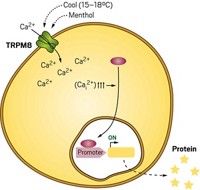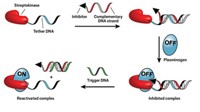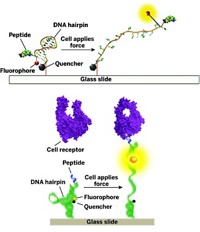Advertisement
Grab your lab coat. Let's get started
Welcome!
Welcome!
Create an account below to get 6 C&EN articles per month, receive newsletters and more - all free.
It seems this is your first time logging in online. Please enter the following information to continue.
As an ACS member you automatically get access to this site. All we need is few more details to create your reading experience.
Not you? Sign in with a different account.
Not you? Sign in with a different account.
ERROR 1
ERROR 1
ERROR 2
ERROR 2
ERROR 2
ERROR 2
ERROR 2
Password and Confirm password must match.
If you have an ACS member number, please enter it here so we can link this account to your membership. (optional)
ERROR 2
ACS values your privacy. By submitting your information, you are gaining access to C&EN and subscribing to our weekly newsletter. We use the information you provide to make your reading experience better, and we will never sell your data to third party members.
Biological Chemistry
DNA Circuits Control Clotting Protein
Synthetic Biology: DNA snippets provide a chemical way to regulate protein function
by Sarah Webb
December 7, 2012

With its ability to store and transmit genetic information, DNA offers molecular cogs and gears that researchers can harness to produce biological circuits. Cells typically rely on gene expression to regulate protein function, but now researchers have built a circuit that regulates protein activity outside of the normal cellular channels. The circuit uses a series of DNA snippets to regulate thrombin, a protein that controls blood clotting (J. Am. Chem. Soc., DOI: 10.1021/ja310428s). The technology could eventually serve as the center of a drug delivery device, the researchers say.
Over the past two decades, researchers have created circuit modules that include a mix of short DNA strands with overlapping complementary sections. These sections pair and unpair like a series of switches, each one releasing a strand that interacts with the next molecule in the module. Eventually, the circuit releases DNA strands that can perform a desired function, such as inhibiting a protein.
As a basis for a new circuit, Weihong Tan of the University of Florida, Gainesville, and his colleagues started with two DNA molecules called aptamers to bind to thrombin: one that binds to the protein but does not affect its activity and another that inhibits its activity. The team’s goal was to develop a circuit that could sense the concentration of thrombin in solution and then, through the inhibitory aptamer, shut down the protein’s activity when thrombin levels reached a threshold. Such a circuit could signal whether to deliver a clotting drug depending on thrombin levels, because excessively high levels in the body can cause blood to clot when it shouldn’t.
The non-inhibitory aptamer starts this process by converting the amount of thrombin protein into a DNA signal. As the non-inhibitory DNA snippet binds to thrombin, it releases a DNA strand. When thrombin concentrations exceed the desired threshold, this released DNA strand then triggers another circuit module to release the inhibitory aptamer. That snippet then binds to thrombin and blocks the protein’s clotting activity. As a result, this system has a feedback switch, a system that’s difficult to engineer into chemical systems but common in biological regulation, says Xi Chen, a postdoctoral researcher at Harvard University.
The paper builds on earlier theoretical work on DNA circuits, Chen adds, but it’s a “very cool” practical application. Tan and his colleagues envision using the circuit to control a drug delivery device that could be implanted in a patient and would respond to thrombin levels in the blood.
But living systems can be more challenging than test tubes, Chen cautions, particularly because small pieces of DNA can provoke immune responses or get chewed up by enzymes. Tan and his colleagues are testing the thrombin circuit in mice and are building related circuits that rely on information from up to four proteins.





Join the conversation
Contact the reporter
Submit a Letter to the Editor for publication
Engage with us on Twitter